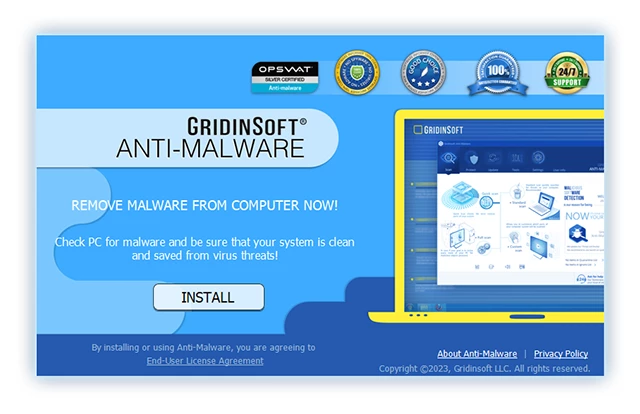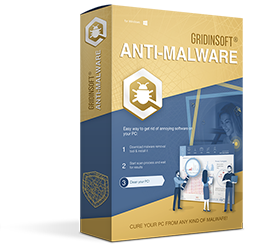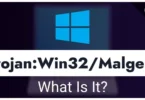Secoh-qad.exe는 KMSPico와 연동되는 컴포넌트입니다., 불법적인 Windows 및 Microsoft Office 정품 인증을 위한 도구. 활성 바이러스 백신 소프트웨어와 함께 배포되는 경우, 이 도구는 보안 경고를 트리거합니다, 실행 파일을 잠재적인 위협으로 식별. 하지만, 이 이름은 다른 악성코드에서 사용될 수 있습니다., 이라는 사실은 그대로 두고 “활성제” 종종 악성 코드를 가져옵니다. 상황은 양쪽 모두 수상하기 때문에, 시스템을 검사하려면 맬웨어 방지 소프트웨어를 사용하는 것이 좋습니다..
Secoh-qad.exe 개요
Secoh-qad.exe는 KMSPico에 속한 파일입니다., 사용되는 프로그램 Windows를 활성화하려면 또는 유효한 라이센스 키가 없는 Microsoft Office 제품. 많은 보안 전문가들은 KMSPico를 잠재적으로 원치 않는 프로그램으로 분류합니다. (새끼) 아니면 균열 도구. 이는 귀하의 시스템과 개인정보에 노출될 수 있는 다양한 위험 때문입니다..

작업 관리자의 Secoh-qad.exe 프로세스
Secoh-qad.exe는 일반적으로 C에서 발견됩니다.:\Windows 폴더 크기는 다음과 같습니다. 4,096 에게 4,608 바이트, Windows 버전에 따라. 또한 다음을 사용할 수도 있습니다. secoh-qad.dll 파일, 같은 폴더에서 찾을 수 있습니다. 파일은 백그라운드에서 실행되며 원격 서버와 통신하여 업데이트를 확인하거나 시스템에 대한 정보를 보냅니다.. 정품 Windows 실행 파일이 아니라는 점을 이해하는 것이 중요합니다.
| 이름 | Secoh-qad.exe |
| 위협 유형 | 트로이 사람, 비밀번호 도용 바이러스, 뱅킹 악성코드, 스파이웨어 |
| 손상 | 도난당한 은행 정보, 비밀번호, 신원 도용, 피해자의 컴퓨터가 봇넷에 추가됨. |
확산 방법
Secoh-qad.exe 트로이 목마는 여러 가지 이유로 나타날 수 있습니다., 하지만 그 모두는 수상한 활동에서 비롯된 것입니다. 위에서 말했듯이, 주로 KMSPico 또는 KMSPico로 이미 활성화된 Windows OS 설정에서 발생합니다.. 소프트웨어 “열분해” (활성화) 도구는 악성 코드 확산의 유일한 수단이 아닙니다. 사이버범죄자들은 다양한 전술을 사용한다, 트로이 목마 포함, 스팸 캠페인, 가짜 소프트웨어 업데이트 도구, 모호한 소프트웨어 다운로드 소스 또는 도구. 트로이 목마, 예를 들어, 설치 시 체인 감염 시작, 추가 악성 소프트웨어 유포. 스팸 캠페인은 이메일 첨부 파일을 통해 바이러스를 배포하는 역할을 합니다., 수신자가 파일을 열도록 유도, 실행 시, 악성 코드 다운로드 및 설치. 이러한 첨부 파일은 JavaScript 파일로 구성될 수 있습니다., MS Office 또는 PDF 문서, 실행 파일 (.exe), 또는 ZIP이나 RAR과 같은 보관 파일.
가짜 소프트웨어 업데이트 도구 사용자를 속여 악성 프로그램을 설치하도록 유도, Secoh-qad.exe 포함, 합법적인 업데이트나 수정 대신, 때때로 오래된 소프트웨어의 취약점을 악용. 또한, 악성 코드는 P2P 네트워크와 같은 신뢰할 수 없는 소프트웨어 다운로드 소스를 통해 확산됩니다. (eMule, 토렌트 클라이언트), 비공식 웹사이트, 프리웨어 또는 무료 파일 호스팅 페이지, 등., 사이버 범죄자가 악성 실행 파일을 합법적인 파일로 위장하는 경우. 사이버 범죄자는 이러한 소프트웨어 소스를 악용하여 사용자를 속이고 스스로 Secoh-qad.exe를 설치하도록 할 수 있습니다., 의도한 소프트웨어나 파일 대신.
악성 코드를 제거하는 방법?
악성 코드는 백업을 생성하는 경향이 있으므로 수동으로 악성 코드를 제거하는 것은 피해야 합니다.. 기술에 정통한 사용자라도 모든 맬웨어 구성 요소를 추적하고 제거하기가 어렵습니다.. 가장 안정적인 접근 방식은 맬웨어 방지 소프트웨어를 활용하는 것입니다..
GridinSoft Anti-Malware는 효율성으로 잘 알려진 권장 옵션입니다., 속도, 그리고 가벼운 디자인, Rage와 같은 위협을 무력화하는 데 능숙합니다.. 6일 무료 평가판을 통해 기능을 살펴볼 수 있습니다.. Rage를 효과적으로 제거하는 방법에 대한 자세한 지침은, 아래의 종합 가이드를 참조하세요..
Gridinsoft Anti-Malware로 secoh-qad.exe 제거
우리는 또한이 소프트웨어 에서이 소프트웨어를 우리 시스템에서 사용하고 있습니다., 그리고 그것은 항상 바이러스를 감지하는 데 성공했습니다. 그것은 가장 일반적인 트로이 목마를 차단했습니다 우리의 테스트에서 보여 주었다 소프트웨어와 함께, secoh-qad.exe는 물론 컴퓨터에 숨어 있는 기타 악성 코드도 제거할 수 있다고 확신합니다..

악의적 인 위협을 제거하기 위해 Gridinsoft를 사용합니다, 아래 단계를 따르십시오:
1. Gridinsoft anti-malware를 다운로드하여 시작하십시오, 아래 또는 공식 웹 사이트에서 직접 파란색 버튼을 통해 액세스 할 수 있습니다. gridinsoft.com.
2.GridInsoft 설정 파일이되면 (Setup-gridinsoft-fix.exe) 다운로드됩니다, 파일을 클릭하여 실행하십시오. Follow the installation setup wizard's instructions diligently.

3. 액세스 "스캔 탭" on the application's start screen and launch a comprehensive "전체 스캔" 전체 컴퓨터를 검사합니다. 이 포괄적 인 스캔은 메모리를 포함합니다, 스타트 업 항목, 레지스트리, 서비스, 드라이버, 그리고 모든 파일, 가능한 모든 위치에 숨겨진 맬웨어를 감지하는지 확인.

인내하십시오, as the scan duration depends on the number of files and your computer's hardware capabilities. 이 시간을 사용하여 휴식을 취하거나 다른 작업에 참석하십시오..
4. 완료되면, 방지 방지는 PC에 감지 된 모든 악성 품목 및 위협이 포함 된 자세한 보고서를 제시합니다..

5. 보고서에서 식별 된 모든 항목을 선택하고 자신있게 "지금 청소" 단추. 이 작업은 컴퓨터에서 악의적 인 파일을 안전하게 제거합니다., 더 이상의 유해한 행동을 방지하기 위해 말장 방지 프로그램의 안전한 검역 구역으로 전송.

6. 프롬프트가있는 경우, 전체 시스템 스캔 절차를 마무리하려면 컴퓨터를 다시 시작하십시오.. 이 단계는 남은 위협을 철저히 제거하는 데 중요합니다.. 재시작 후, Gridinsoft anti-malware가 열리고 메시지를 표시합니다. 스캔 완료.
Gridinsoft는 6 일 무료 평가판을 제공합니다. 즉, 소프트웨어의 모든 이점을 경험하고 시스템의 향후 악성 코드 감염을 예방하기 위해 무료로 시험 기간을 이용할 수 있습니다.. Embrace this opportunity to fortify your computer's security without any financial commitment.








의견을 남겨주세요